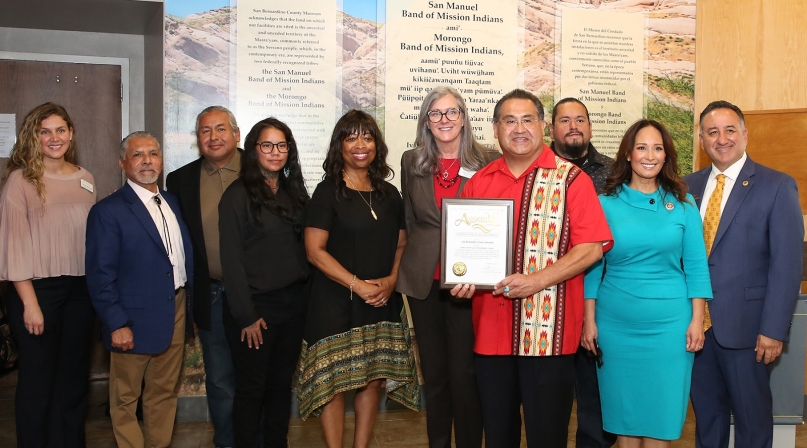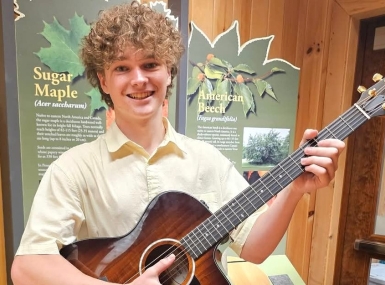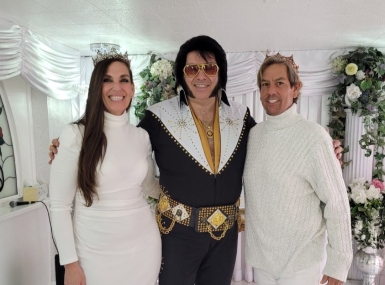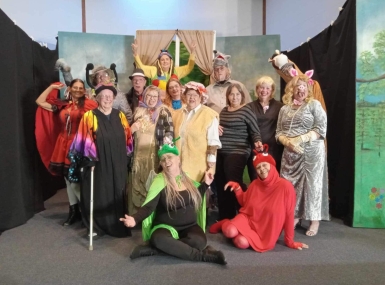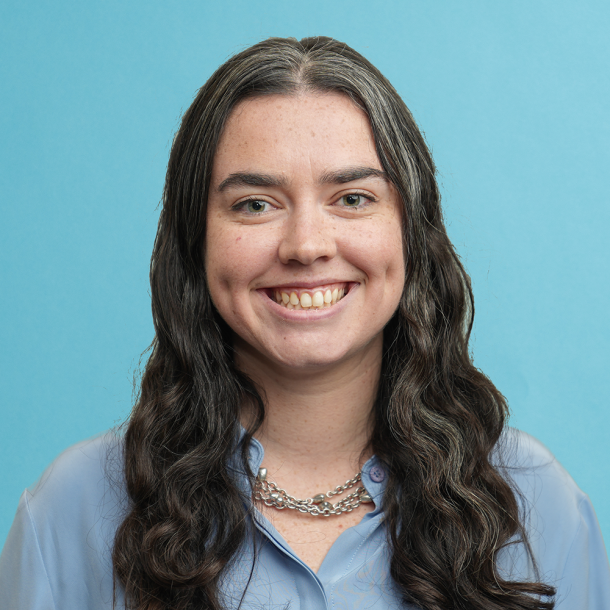Problem:
|
Not all voices were represented in the region's history.
|
Solution:
|
The San Bernardino County Museum collaborated with local tribes to tell their stories.
|
The San Bernardino County Museum worked with the San Manuel and Morongo bands of Mission Indians to establish a formal land acknowledgment that recognizes the museum was built on the indigenous tribal governments’ ancestral land.
“Fifty years ago — even 20 years ago — there was a different focus and priority and a lot of what you saw when you came into the museum was isolated, it was untouchable, only academics really knew what was going on,” said Tamara Serrao-Leiva, the museum’s anthropology curator. “If anything was represented, it didn’t have a tribal voice, it was all interpreted from a Western perspective, so with the land acknowledgement, it’s just a very loud way of saying, ‘Your voice is represented here, you’re here and we’re partners in the interpretation of your own history.’”
Learn more
The program was a NACo Achievement Award winner in the Arts, Culture and Historic Preservation category
Applications for the 2023 NACo Achievement Awards are due April 7
The San Bernardino County Museum
The land acknowledgment is displayed at the museum’s entry and features audio of one of the tribal community members discussing the land acknowledgment in Serrano, a native language of the Mission Indians.
The wildflower imagery behind the acknowledgment is meant to represent “new life,” Serrao-Leiva said.
“It became this really beautiful collaboration — from the language itself to even the images we picked out to celebrate it,” Serrao-Leiva said. “It’s right there in our front lobby, so it’s the first thing you see. A lot of [tribal members] came out during our opening, and it was really moving — one in particular mentioned how cool it was to bring her kids and for them to feel like this is their space, too. I think everyone was crying during that part, it was really beautiful.
“… To actually have San Manuel leadership and Morongo leadership in the same room — they’re kin, they’re Serrano and they work a lot together anyway — but that was another aspect that was really neat to see, having both tribal agencies speak at our opening reception and just everyone having an equal voice was just a cool, unexpected gift.”
The project is the first land acknowledgment in San Bernardino County, the largest county in the country.
The creation of land acknowledgments has increased in recent years, particularly in academic spaces, following the Standing Rock Sioux Tribe protests to stop the construction of the Dakota Access pipeline in 2016 and 2017.
“It all came about really organically — we were just chatting about what more we could do, in addition to our exhibit spaces that can speak to representing that group,” Serrao-Leiva said. “ …Having the first one to ever come out and really work with the county on logistics on that was monumental for us. We were allowed to add the land acknowledgement to our county signature line, which is actually pretty standard.
“The way I’ve seen it, when you go to conferences or a tribal museum library conference, most indigenous individuals before they even begin, they’ll say their traditional greeting, they’ll say, ‘This is ancestral land,’ so I think that’s how the museum started grasping that concept and saying, ‘Oh, we should really do that, we should establish from the very start that we are on the unceded territory of ancestral people.’”
The museum is a county department in the Community Services Group, and everyone at the county level — from managers to supervisors on the Board — were excited and supportive of the land acknowledgment, according to David Myers, the museum’s director. However, it couldn’t have been made possible without the help of the San Manuel and Morongo tribal governments, he said.
“We’re focused on the work we did within the county, but there was also obviously a lot of work on the side of the tribes, a lot of support and just the fact that they allowed us to do it,” Myers said.
“It’s not something we would have done had they not wanted to support it. They guided us the entire way, gave us access and allowed us to use the language, they approved the design and they celebrate with us, so they were absolutely an equal partner in all of this.”
The land acknowledgment was established in 2020, but the museum has worked with the tribal governments dating back to 2015 with its “Welcome to Our World” exhibit and most recently on the immersive “Mosaics in Mojave” that features a walk-through cave dwelling and allows visitors to design their own rock art.
“They helped us [on Mosaics in Mojave] with content, themes, object selection, layout, the Serrano language,” Serrao-Leiva said.
“It’s really cool to see how much has changed and how much we’ve evolved together, the tribe and the museum — both government agencies really coming together to create something really beautiful, so the [collaborations] have gotten bigger and better throughout the years.”
